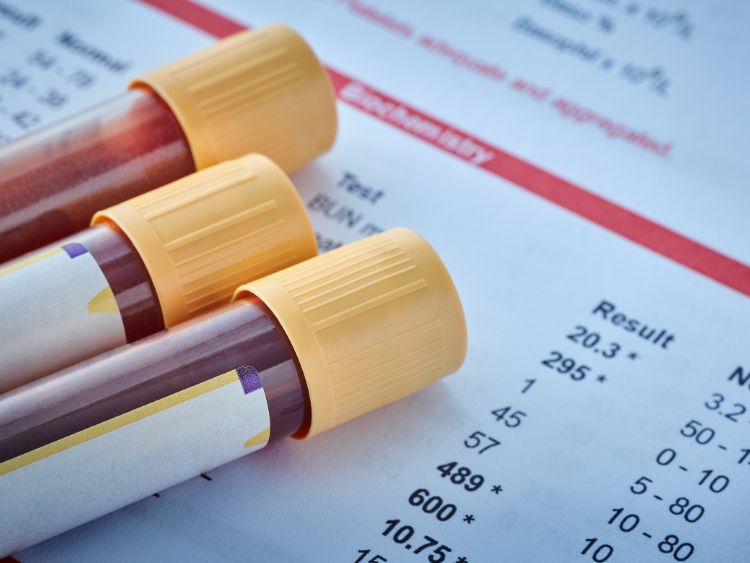A place of both dramatic historic events and unparalleled scenery, beautiful and now peaceful Kealekekua Bay (Pathway of the Gods) opens beneath steep, beetling cliffs on the ancient surfing beach along the shoreline of Napo’opo’o Village. The site of arguably the most important event in the history of Polynesia, home to pods of frolicking dolphins, hosting the greatest density of hammerhead sharks anywhere in the Pacific Ocean and providing some truly breathtaking Kayaking and snorkeling, Kealekekua Bay is one of the most truly magical spots in the State of Hawai’i.
Across the bay from Napo’opo’o stands the solitary white obelisk that marks the lonely Captain Cook Monument rising among the ruins of Ka’awaloa Village. High along the cliff walls can be seen numerous burial caves of the iwi (bones) of Ali’i, and in the late afternoon light, a greyish streak is visible on the northwest wall. Local legend has it that a canon-ball fired by Cook to impress the Hawai’ians left this streak as it smeared and bounced along the cliff. Close in along the beach, historic Hikiau (Moving Current) Heiau stands through the ages, witness to the tsunami of enormous changes that swept through Hawai’i with the coming of Cook and the Europeans, which began right here at Kealekekua Bay.
Perhaps the most sought-after snorkeling area in Hawai’i, visitors frequently kayak from Napo’opo’o to the monument to enjoy the Class Triple-A waters and abundant sea life. However, the monument is also accessible by hiking a trail down from the highway; this hike takes 4-6 hours round trip and drinking water is not available anywhere along the journey.
History: It was in this broad bay that Captain James Cook made his deepest impression on, and longest visit with, native Hawai’ians when he first arrived late in November of 1778. And it was along the shores of Kealekekua Bay where he met his tragic end in February 1779 during his second visit. Forever altered from the moment of Cook’s arrival, the evolution of Hawai’ian society would soon change in ways the Native Hawai’ians could scarcely have imagined just days before the Englishman made shore here.
Arriving in his ships Resolution and Discovery at the height of Makahiki, a season of peace, worship, hula, games and feasting, Cook was greeted as the personification of the god Lono, feted as a divine guest and treated with feasts, gifts, respect and awe. A god of plenty and agriculture, Lono’s personal sign was a tapa cloth hung from a crossbeam suspended from a single pole, a profile not too unlike that of the sailing ships Cook arrived with.
On January 28, 1779, Cook presided over the first Christian ritual performed in the Hawai’ian Islands when he read the burial service for crewmember William Whatman at Hikiau Heiau. After sailing from Hawai’i to search for the Norwest Passage along the Alaska Coastline shortly thereafter, Cook and his crew had to return to Kealekekua Bay abruptly and unexpectedly to repair a mast. With the celebratory mood of Makahiki over, dismayed about the previous behavior of the sailors and noting that the Englishmen had consumed an inordinate amount of food, Cook and his men were greeted much less warmly upon re-arriving. Tensions ran high and when a group of Hawai’ians stole a rowboat to scavenge the nails. Cook attempted to take Chief Kalanio’pu’u as hostage to insure the boat’s return and to reassert his authority. A scuffle broke out and Cook was killed by the Hawai’ians in the ensuing melee.
Captain King’s eye-witness account of Cook’s death is as stark and barren as the cliffs that loom above the site: “Four marines were cut-off amongst the rocks in their retreat and fell as sacrifice to the fury of the enemy…Our unfortunate Commander, the last time he was seen distinctly, was standing at the water’s edge, calling for the boats to stop firing and pull in…” In this battle, five Englishmen died and 17 Hawai’ians, five of them chiefs, were killed. Eight more Hawai’ians were killed in a subsequent melee near the heiau.
Cook’s body was sacrificed to Ku, the war god, at Puhina O Lono (burning of Lono) Heiau, his flesh baked, bones flensed and body parts distributed to various Ali’i. It is said that, as a mark of honor, Kamehameha received Cook’s hair. Ever the astute politician, Kamehameha returned this grisly trophy to the British sailors soon afterward. It is neither polite nor wise to raise this subject with modern Hawai’ians, but noting that the ancient Hawai’ians were habitual cannibals used to ritually consuming the flesh of their vanquished foes, it is reasonable to assume that Cook’s mortal coil received this treatment. In fact, this cannibalistic honoring of Cook as a worthy foe comes down to us in a Hawai’ian wives’ tale of village children stealing and eating Cook’s baked entrails because they mistook them for those of a dog.
Fearing a bloodbath after the initial fracas, Captain Clerke ordered the men of Resolution and Discovery to stand down, and the mortal remains of James Cook that had been returned by the Hawai’ians were buried at sea. Exacting revenge, a few Englishmen snuck ashore on more than one occasion, killing numerous villagers in their anger.
Summing-up the feelings of the crew after Cook’s burial at sea, the ship’s surgeon wrote: “In every situation he stood unrivaled and alone. On him all eyes were turned. He was our leading star which, at its setting, left us in darkness and despair.”
In 1874 British sailors erected the current white obelisk monument to Captain Cook on a spot quite a bit distant from where he was actually killed. The area remains a piece of British Territory on American soil and is maintained by Brit sailors passing through.
Snorkeling: Swimming to the monument from Napo’opo’o is recommended only for well-conditioned long-distance swimmers used to crossing stretches of open ocean; the swim takes about an hour each way. Bear in mind that this bay has the highest population density of hammerhead sharks of anywhere on Earth-not that anyone has ever been known to have been attacked. Snorkeling and scuba diving at the monument is unrivaled anywhere in Hawai’i, but access is hampered by lack of any road nearby. The monument may be reached either by boat from Napo’opo’o or by hiking the trail down from the Highway. Numerous tidepools, vast underwater topography, caves and spires, a several-hundred foot drop-off and an abundance of varied sea life including dolphin, hammerhead sharks, eels and manta rays are the highlights of underwater exploration of this bay.
Kayaking: Many shops along the Kona coast rent kayaks to visitors for the short paddle to the monument, and this is highly recommended over swimming the mile of open ocean. Put in at the old concrete pier in Napo’opo’o and expect to take between 30 and 45 minutes to paddle to the monument. Don’t go out if the swells are large, or if there is a strong offshore wind. Dolphins frequent this bay and you are admonished to keep at least 100 feet from them, although they may approach you more closely. Never reach out to touch or feed a dolphin; they are wild animals (this ain’t Flipper!) and will bite. Noting that they are among that class of Cetacea called “Peg-toothed whales”, these bites can be anywhere from a mild nip to life threatening if the dolphin becomes angered. Be sure to return to the pier well before dark, remembering that there is little twilight in tropical regions. Take at least a gallon of water for each person and food-none of either are available at the monument and paddling is hot, thirsty and hungry work, though the rewards of snorkeling the crystalline waters at the monument are more than worth the effort.
Hiking: Hiking down to the monument from Highway 11is a great deal of fun-great scenery, wonderful trail and involves complete immersion in Hawai’ian pre- and post-contact history and offers the opportunity for some of the finest snorkeling anywhere on the planet. However, the return hike is hot, thirsty and strenuous; but it is also highly rewarding, granting panoramic views all up and down the Kona Coast. The trail leaves the Napo’opo’o Road just 500 feet below where it drops off Highway 11 near a large avocado tree, right across from a group of three coconut trees, right at telephone pole number 4. The parking spots and trailhead will show signs of obvious use, usually in the form of recently deposited horse apples from the many trail riders frequenting the area.
The first avocado tree is the harbinger of wonderful things to come, as the trail passes through an area rich in guava, mango, papaya and avocado that are free for the gathering. The 2.5-mile hike takes about 2-2 1/2 hours to descend, somewhat more time to come back up. After following a jeep road for about 50 feet, the trail turns left when the jeep road turns right onto private property. Although overgrown by tall grass for the next half mile, the trail runs more or less straight down the left side of a rock wall to the sea. As the pitch straightens out, keep to the left when the trail first forks and proceed to the beach. You will strike shore several hundred feet northwest of the monument-stroll through the remains of Ka’awaloa Village along the beach on your way to pay homage to Europe’s most prolific explorer, James Cook.
It is also possible, but much less pleasant, to hike most of the way to the monument along the shoreline. This hike is an uninteresting exercise in scrambling over boulders along the beach and contains at least two places that have to be swum in rough water; as such, the safety of this trek is totally at the whim of ocean tides and swells. Highly not recommended.
Donald B. MacGowan: Originally, Dr. MacGowan pursued a career in academics, earning two B.Sc. degrees, a dual M.Sc., and a PhD.; co-authoringd over 5.2 million dollars in grants, and publishing more than 200 refereed journal articles, abstracts, etc. Gaining sanity somewhere in that process, he quit the academic rat race and began to live. Donnie is an accomplished, prolific alpinist, having climbed on 5 of the seven continents, putting up more than 150 first ascents on rock, ice and snow, and a dozen first ski descents. He has written, directed and produced short and feature length films on mountaineering and travel. Donnie records and tours relentlessly with his Celtic Punk fusion band “Fatal Loins”–although nobody much seems to care for their music. A Hawaii resident since 2000, he quietly and humbly inhabits Kailua Kona, doing environmental good works, surfing the be-jeezis out of the local waves and frenetically producing somewhat bizarre and mildly disturbing programs for local television which have recently been lauded as: “Ignorant”, “Arrogant” and “Totally Insane”. You may say what you wish about him, Donnie does not care. For somewhere underneath those swaying palm trees, in those warm aloha breezes, he is far too busy praying for good surf to hear you…


